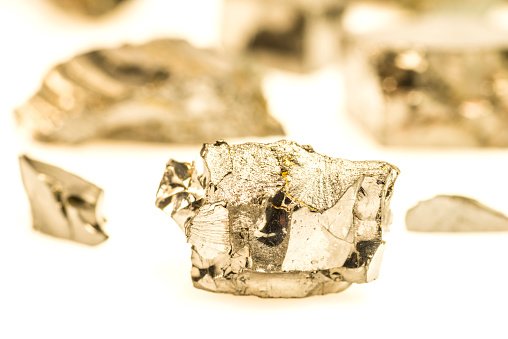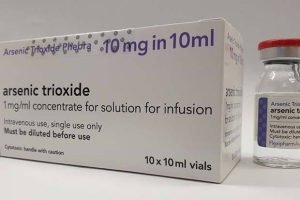Fullerene is an allotrope of carbon that is only made of carbon atoms. Its name was derived from an American architect, Buckminsterfullerene, who discovered it. This compound comes in different shapes and is three-dimensionality. Since its discovery in 1985, this compound has found its way into several industrial and medical fields. This article will examine the typical applications of this compound, fullerenes.
Uses of Fullerenes include:
1. Antioxidants
Fullerenes make an excellent biological antioxidant. The compound has large numbers of double bonds and very high electron affinity, making it an ideal antioxidant compound. Similarly, the compound has low energy of the unoccupied molecular orbital, and because of this, it can easily absorb radicals. In addition, the molecular orbital acts as an effective cryprotectors, which masks the ultraviolet A irradiation. Thus, preventing damage to cells.
2. Antiviral Agents
Fullerenes are fully packed with antiviral agents. The antiviral agents in this compound have several medical values and use in diverse pharmacological activities. The antiviral agents can suppress the replication of HIV and delay the onset of AIDs. Some types of fullerenes, like Derivative 2 and Dendrofullerene 1, can hinder the HIVE protease, and because of this, the body’s immune system can prevent HIV 1. In addition, fullerenes are rich in antibacterial properties and, thus, can fight any virus-causing agents.

3. Photosensitizers
Fullerenes compounds are essential in photodynamic therapy. In this therapy, non-toxic light-sensitive compounds like fullerenes are used. These compounds react with light to form a toxic compound and are used to generate singlet oxygen. In this therapy, the fullerenes compound is converted to C60 (In the presence of electron donors). The converted compounds aid in converting radical anions to anionic superoxide and other hydroxyl compounds.
4. Gene and Drug Delivery
Gene and drug delivery is the transportation of drugs and genes to the part where they are needed. Due to scientific improvements, there is direct delivery of genes and drugs into the cells. However, the entry process of these pharmaceutical compounds is challenging, as the cells have three utmost layers. However, fullerenes being an inorganic compound has excellent biocompatibility properties. In addition, this compound, fullerenes, is hydrophobic, and thus it is water soluble to drugs and genes. Therefore, fullerenes can carry drugs and genes for cellular delivery due to these properties.
5. Hardening agents
Fullerenes are generally hard. Its structure matches a diamond’s, and the compound’s bonding explains its hardiness. It is used as a substitute in manufacturing lightweight metals with mighty tensile strength. The fullerenes compounds have high reactivity and small-sized properties, and because of this, they can be used to produce hard metals that have excellent tensile strength. In addition, the hybridization of the carbon atoms in the compound promotes the strengthening metal matrix. Therefore, this compound can be used in the production of various metals.
6. Photovoltaic cells
Fullerenes are vital in the production of solar cells. A polymer-based compound, an organic photovoltaic cell made up of fullerenes compounds, is essential in converting solar energy to electrical energy. The fullerenes compounds in the solar cell are light sensitive; thus, they transfer free electrons when irradiated with light. The generated free electrons are transferred to the solar electrode due to the ability of this compound to transfer compounds. Similarly, the produced electrons have high electron affinity, and because of this, they are good acceptors.
7. Gas Storage
Fullerene is an excellent compound for storing hydrogen gas. The structure of carbon atoms in fullerenes compound allows the dehydrogenate and hydrogenate process. It is made of double carbon bonds, C=C, and these bonds can be broken with ease. During hydrogenation, the double bond in the compound is broken into C-C and C-H bonds. The hydrogen atom is stored in one of the bonds of the fullerenes. On the other side, during the dehydrogenation process, which involves heating, the C-H bond is broken to produce the fullerenes (C=C). In hydrogen industries, for example, the fullerenes compound.
8. Lubricant
The layers of fullerenes can easily slide over each other and, thus, form an excellent lubricant. Most of the low-friction micro-bearings are made of fullerenes-based products. Fullerenes is an abrasive metal; therefore, it can easily overcome wearing-away and scrapping defects. The bearings made from this metal are likely to be low-friction and durable.
9. Used as a Conductor
Fullerene is an excellent conductor of electricity. The compound has a high affinity and promotes the mobility of electrons. These properties make the compound helpful in producing electrical conductors, tools, and devices.
10. Eyewear
Fullerenes compounds are rich in optical limiting characteristics. These properties allow optical devices to reduce the transmittance of light. In producing protective eyewear and other sensors, fullerenes are extensively used to produce optical limiters. Thankfully, these compounds promote the production of limiters that allows light below a given threshold.
11. Cosmetic Industry
The molecular conductors of fullerenes compounds are helpful in cosmetic industries. The cost of synthesizing these molecules is lower, which explains why it is greatly used in the cosmetic industry. In addition, it can be used to make alluring art.

12. Used in Diagnostics
Fullerenes have potential in diagnostics. The compound has gist application in the imaging and tracing of diseased organs in the body. Some of the derivatives of fullerenes are used as radioactive agents and tracers. They are pharmaceutically utilized to trace the presence of cancerous cells and to kill cancerous cells and tumors. Due to their non-toxify properties, these compounds can easily interact with the body without causing any harm to body cells.
13. Making of Nanotubes-based products
Fullerenes are essential in the production of nanotube products. The fullerene structure is rigid and flexible, allowing nanotubes to form like fabric and fibers. These materials are used in construction, automobiles, aircraft, and other civil engineering fields.




